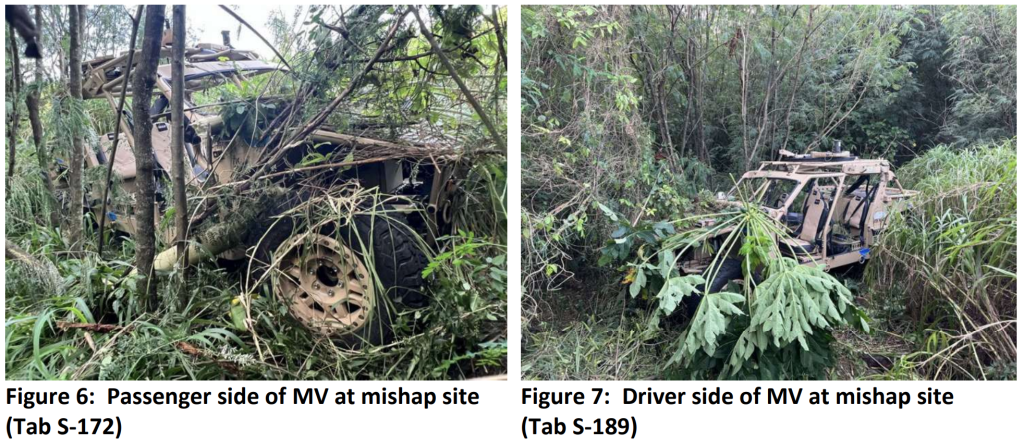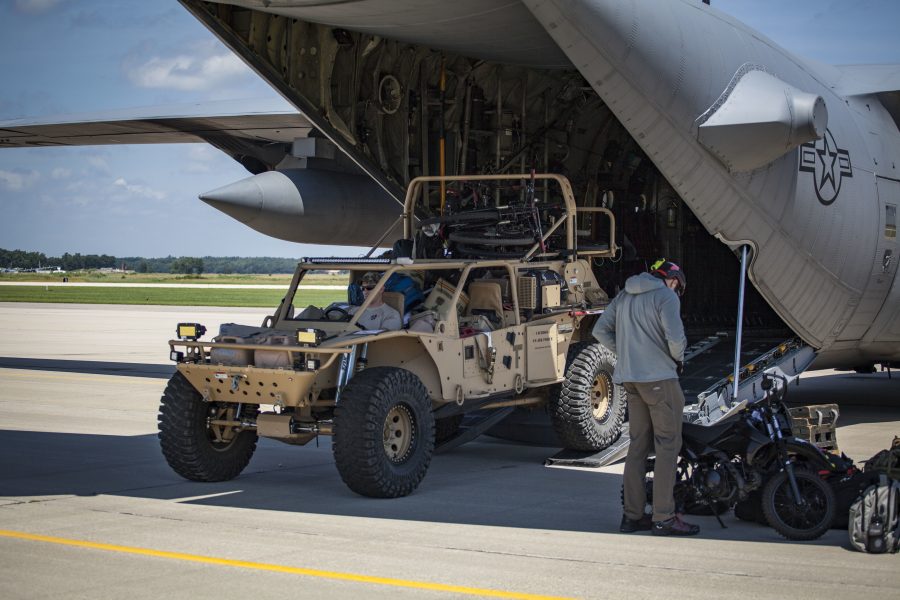One Airman was left permanently paralyzed below the waist and another suffered internal bleeding and had her leg amputated after an all-terrain, search-and-rescue tactical vehicle (SRTV) they were riding in rolled over on the island of Tinian last year. A subsequent investigation determined neither Airman was wearing a seatbelt or protective equipment, and the driver was speeding down a rough, World War II-era road.
The mishap occurred last February during the Cope North exercise. That day, pararescuemen were being dropped over the water for an over the beach insertion to recover an isolated person. A Tactical Air Control Party (TACP) officer and a combat camera noncommissioned officer were supposed to meet the PJs on the beach—the TACP to provide communications support, the combat camera to capture images for public affairs.
While another service members and an exercise participant drove a rental vehicle to the beach, the TACP officer volunteered to fuel and drive a SRTV-SXV Tactical Vehicle, a lightweight, open-air vehicle used by Guardian Angel rescue teams.
The combat camera NCO had no experience on the vehicle and did not even know how to buckle the seatbelt, investigators wrote in a report. When she asked the TACP for help, he said they would not need seatbelts because the ride would only take five minutes. He also did not inform her that “ankle covering, boots, pants, gloves, eye protection, helmet, and seatbelts” are all required while operating the vehicle.
With neither Airman buckled in, they drove down an unpaved road with vegetation growing close on both sides. Investigators noted that most roads on Tinian were constructed in 1944 when the island was a bomber base for the U.S. during World War II, and they have not been improved since.
The combat camera Airman later told investigators she felt the TACP officer was driving too fast and told him to slow down, as gravel and vegetation hit her. The officer told investigators he did not remember hearing any warnings or requests to slow down. Instead, he said an issue with the steering caused the vehicle to drift into the brush on the passenger side, and he overcorrected, sending the vehicle into the brush on the other side.
The vehicle then rolled over, ejecting both Airmen. A nearby civilian attempted to render aid, then went and informed other service members about the mishap. First responders were able to administer tactical life-saving care, and the combat camera Airman was quickly flown on a C-130 to Guam, where she was transferred to a medical facility. The TACP officer was moved to Guam later that day.
The combat camera NCO suffered a pelvic fracture and internal abdominal injuries, resulting in “an above-knee amputation of the right leg and significant scarring and motor/sensory limitations on the left leg,” investigators wrote. The TACP officer “sustained serious injuries, resulting in permanent paralysis below the waist.”
Based on the evidence, investigators estimated that the tactical vehicle was going between 40 and 50 miles per hour at the time of the accident. There was no posted speed limit, but a local police officer later said that given the road’s condition and the overgrown vegetation, he would have recommended a speed limit of 15 miles per hour. Manufacturer BC Customs recommends a maximum speed of 45 miles per hour on paved surfaces.

Investigators wrote that during the acquisition process for the SRTV-SXV, officials became aware that the vehicle had a “tendency” to roll over due to its narrow wheelbase and high center of gravity. The manufacturer offered to install spacers to increase its wheelbase and lower the center of gravity, and while the Air Force eventually decided proper training would be enough to mitigate the risk without degrading performance, officials determined the vehicle in the mishap had the spacers installed.
However, proper training could have been a factor in the mishap. The TACP officer told investigators he had received training on multiple types of tactical vehicles, as well as familiarization training from a pararescueman on the SRTV-SXV just days before the mishap. However, investigators found no documentation of that training, and the PJ told them he did not train the officer on the SRTV-SXV. Without proper documentation of training, the TACP was not qualified to drive the vehicle.
Vehicle rollovers are one of the leading kinds of mishaps across the armed services. In 2021, the Government Accountability Office released a study of such incidents from 2010 to 2019 among the Army and Marine Corps and counted 3,753 noncombat accidents resulting in 123 service member deaths.
More recently, two Soldiers were killed and 12 more injured in Alaska when a tactical vehicle rolled over last October.
The Air Force has had issues as well. In 2020, two Airman died in the span of three days at Ali Al Salem Air Base in Kuwait after two separate rollover incidents. Air Education and Training Command’s safety directorate published a release June 19 noting the risk of rollover mishaps and a growing trend of fewer U.S. teens gaining driving experience.
